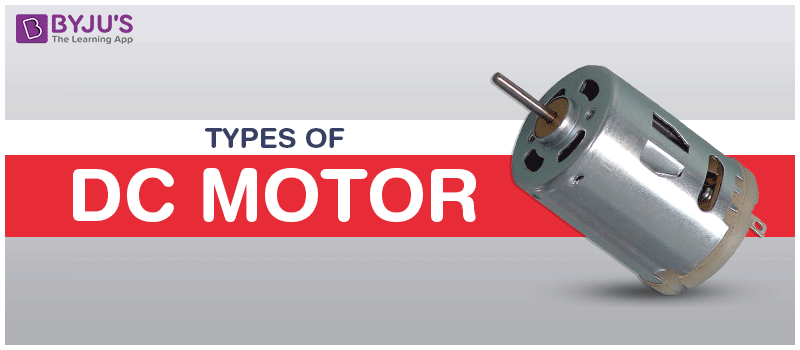We know that there are two types of motors, namely AC and DC. The AC motor uses AC current to transform electrical energy into mechanical energy. There are many types of AC motor. The DC motor uses DC current to transform electrical energy into mechanical energy. The main advantage of using this is that we can control the speed, and it occupies less space.
There are 4 major types of DC motor. They are:
- Series DC Motor
- Shunt/Parallel DC Motor
- Compound DC Motors
- Permanent Magnet DC Motor
In the case of a permanent magnet DC motor, permanent magnets are used to create field flux. The other three types are classified based on the electrical connections between the stator and the rotor. Each of them has a unique torque/speed.

| Table of Contents |
You may also want to check out these topics given below!
- The Electric Motor
- Difference between AC and DC Motor
- Difference between AC and DC
- Types of DC Generators
Classification of DC Motor
Based on the type of construction and electrical connection, DC motors can be categorised into four major types. A brief chart (based on the type of construction and electrical connection) is given below:

Types of DC motor when listed sequentially:
- Permanent Magnet DC Motor
- Shunt Motor
- Series Motor
- Compound Motor is again classified into
- Short Shunt Motor
- Long Shunt Motor
- Differentially Compound
- Cumulative Compound
Permanent Magnet DC Motor
In these types of DC motor, the permanent magnet is used to create a magnetic field. In this, no input current is consumed for excitation. These are used in automobile starters, wipers, air conditioners, etc
Shunt DC Motor
Here, the field is connected with the armature windings in parallel or also known as a shunt. The shunt field can be separately excited from the armature windings and that is the reason it can be used for greater speed regulation and can also offer very simplified reverse control.
Series DC Motor
Here, a large wire carrying the full armature current winds the field with few turns. This kind of motor generates a large amount of starting torque but the speed cannot be regulated here. If they are run with no load then it might face damage. These are not the ideal option for variable speed applications.
Compound DC Motor
These have a shunt field which is separately excited. They have a good starting torque but might face problems in variable speed applications.
Short Shunt DC Motor
Here, the shunt field winding is only connected with the armature winding and that too in parallel. The field coil, which is in series, is entirely exposed to current before being split up into the armature.
Long Shunt DC Motor
Here, the shunt field winding is connected in parallel with the both series field coil and armature which are again connected with each other in series.
Differentially Compound DC Motor
In this type of compound wound DC motor, the flux produced due to the shunt field windings reduces the effect of the main series windings.
Cumulative Compound DC Motor
Here, the flux produced by the shunt field windings enhances the effect of the main field flux which is produced by series winding.
Frequently Asked Questions
What is the function of permanent magnets in a permanent magnet DC motor?
A permanent magnet DC motor uses permanent magnets to create field flux.
What is a series motor?
A large wire carrying the full armature current winds the field with few turns. This kind of motor generates a large amount of starting torque but the speed cannot be regulated here.
What is a compound motor?
These have a shunt field which is separately excited. They have a good starting torque but might face problems in variable speed applications.
What are the types of compound excited DC motors?
The types of compound excited DC motors are short shunt motor, long shunt motor, differential compound, cumulative compound.
What are the types of self-excited DC motors?
The types of self-excited DC motors are shunt excited, compound excited and series excited DC motors.
What happens when the speed of a DC motor increases?
When the speed of a DC motor increases, back emf increases but there will be a fall in the line currents. This is because speed is proportional to the back emf. If there is a series motor, the armature current will be equal to the load current.
How to determine the direction of rotation of the motor?
The direction of rotation of the motor is determined by Fleming’s left-hand rule. The law states that when the current-carrying conductor is placed in the magnetic field, there is a force acting on the conductor, and on the other side of the conductor is forcefully kept under a magnetic field, there will be an induced current in the conductor.
Faraday’s Law of Electromagnetic Induction Explained


Comments